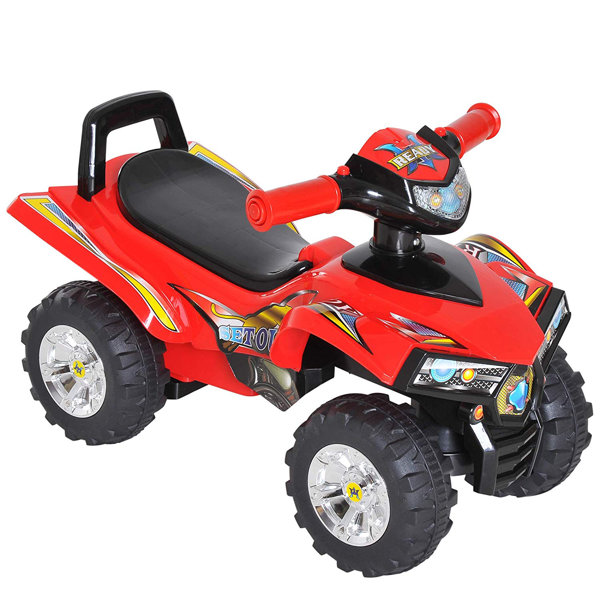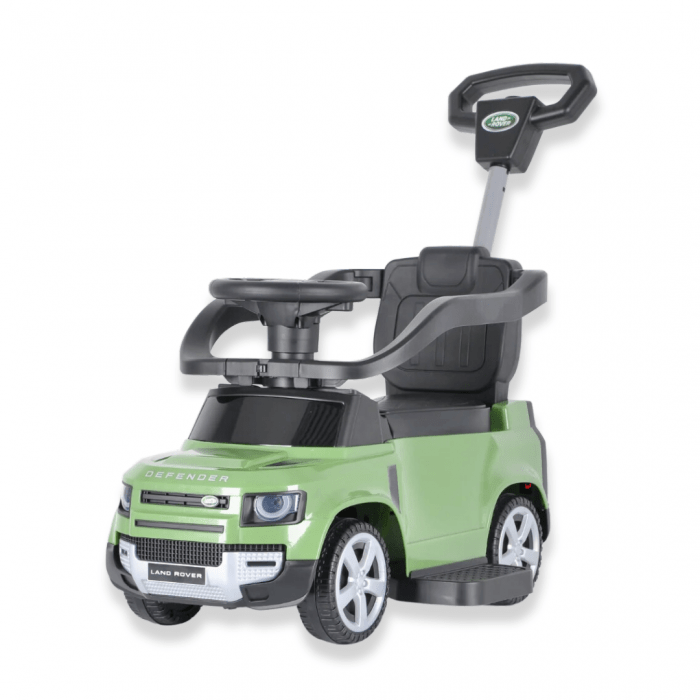Top Tips To Selecting Kids Cars
Wiki Article
What Ride-On Car Features Should I Look At? Pros And Pros And
When choosing a ride-on vehicle for your child the safety features must be considered to ensure their safety during playtime. Here are a few safety features that you should take into consideration.
Pros: Seat belts protect your child from the ride-on vehicle, reducing the possibility of them falling off or getting thrown out in the course of play. Seat belts provide additional security, especially when making abrupt turns or stopping abruptly.
Pros - Not all ride-on cars come with seatbelts. This is especially true for those made specifically for younger children. Children might also find seat belts to restrict their mobility or uncomfortable and may decide to avoid or refuse to use them.
Sturdy Construction
Pros: A car constructed with high-end materials and a sturdy structure will last longer and resistant to damage. It will also ensure long-term safety and reliability. It can withstand all the demands of play and provide stability.
Cons - Strong construction usually costs more at a higher level, which makes it less affordable for some families. Additionally, the more heavy materials may affect the maneuverability and portability of the ride on vehicle.
The Low Center of Gravity
Pros: Cars that have low centers of gravity are less likely to overturn which decreases the likelihood of accidents or injuries. They offer greater stability and greater balance, particularly in turning and maneuvers.
Cons - Some rides-on-cars with lower centers of gravity could sacrifice their off-road ability or clearance from the ground. This can limit their use in certain environments.
Remote control for parents' -
Pros: Remote-controlled vehicles allow parents to observe and supervise their children's activities, giving an extra layer of supervision and safety. Parents can intervene in order to prevent accidents, navigate around difficult terrain, and assist their child in an emergency situation.
Cons - Parental remote control can limit a child's autonomy as well as independence and freedom to play since they'll be relying on the guidance and help of their parents when they play. In addition, remote-controlled vehicles can be more costly than traditional ride-on cars that require manual operation.
Speed Limiters
Pros - Ride-on vehicles with speed limiters or adjustable speeds allow parents to control the maximum speed, and decrease the chance of accidents or collisions. The parents can increase the speed of their ride-on vehicle as their child becomes more confident and proficient.
Cons – Some children will outgrow lower speed settings and this can cause frustration and dissatisfaction. In addition, speed limiters may not be available on all models, or require additional features or other accessories.
Safe Start Technology -
Safe start technology minimizes the chance of sudden lurches and jerks which could startle or even destabilize a child. It makes riding more enjoyable and safer.
Cons – Ride-ons that come equipped with safe-start technology are more costly. Additionally, some children may find the gradual acceleration and deceleration less exciting or engaging than quick stops and starts.
Visibility Enhancements
Pros - Ride on cars that have visibility enhancements like functioning taillights or headlights as well as reflective materials that improve visibility, particularly in dimly-lit locations or with low light conditions. The cars are well-lit, which enhances safety.
Cons - The increased visibility could lead to the battery draining faster, or add the complexity of the design. This increases the likelihood of problems or maintenance.
You can ensure your child's security by weighing the advantages and disadvantages of these options. Take a look at the best Mercedes ride on car for blog advice including toy cars, electric ride along car, digger ride, childrens electric ride on, remote control childrens car, ride on toy, toy in car, toy a car, toy and car, ride ons and more. .

What Are The Assembly And Maintenance Conditions For Children's Ride-On Cars?
To ensure safety and durability To ensure safety and durability, the majority of ride-on cars for kids require assembly. Here are the typical assembly and maintenance requirements for kid's ride-on cars - - Assembly -
Most ride-on vehicles are assembled, and may require assembly. Connecting the parts like wheels as well as steering wheels and seats, in accordance with the specifications of the manufacturer, is the norm.
Follow the assembly guidelines carefully and ensure that each component is securely attached. To complete the assembly, make use of the tools and equipment provided.
Cleaning
For the ride on car to appear its most attractive and function efficiently, regular maintenance is essential. Use a soft sponge, or cloth soaked in mild soap and water to wash the exterior surfaces.
Pay particular attention to areas prone to buildup, such as the wheels, tires, and undercarriage. Use a brush or a tooth brush to clean areas that are hard to reach and eliminate hard-to-remove dirt.
Avoid using harsh chemicals, abrasive cleaners or high-pressure water spritzers, as these may harm the paint or electronic parts of the ride-on vehicle.
Battery Care
It is important to take care of the battery if your vehicle that you ride on is powered by a battery which can be recharged. This will allow you to maintain the performance of your battery and extend its the life of your battery. Use these battery care guidelines -
Charge the battery fully both before and after each use to maximize runtime.
Avoid charging too much or leaving the battery connected to the charger for prolonged time, as this could cause damage to the battery and decrease the battery's lifespan.
The ride-on car battery should be stored in a dry and cool location when not in use, away from direct sun or temperatures that are extreme.
If you have to, clean the terminals with the help of a terminal cleaner or wire brush in the event that they have corrosion-prone.
Replace the battery when it's no longer charging or if you notice evidence of damage.
Tire Maintenance -
Regularly check the tires for evidence of wear, damage or air loss. Make use of a bicycle compressor or air compressor to fill the tire to the pressure recommended by the manufacturer.
Check for foreign and debris objects in the tread pattern that may cause punctures. Replace the damaged tires and eliminate any obstructions.
Lubricate your wheels and axles to ensure smooth rotation.
Periodic repairs and replacements
Despite routine maintenance, ride-on cars might require periodic repairs or replacement of parts due to wear and tear or accidental damage.
Pay attention to signs of malfunction and deterioration like unusual noises, loss or power or irregular behavior. To find solutions to troubleshooting and repair check the manual of the manufacturer.
Replace worn-out or damaged parts promptly to prevent further damage and ensure the safety and efficiency of the ride-on car.
By adhering to these maintenance and assembly guidelines, you can keep your kid's ride-on car in good condition and provide hours of safe and enjoyable time with your child. Read the top click here about remote control childrens cars for blog recommendations including electric car ride, electric ride on cars, car toy car toy, race car toy, electric toy car, a toy car, toy a car, car electric ride on, toy car, ride ons and more. .

How Do You Decide On An Amount To Spend On The Purchase Of A Ride-On Car For Your Child?
The process of setting a budget for your child's vehicle purchase requires you to consider a variety of factors like the features, durability, and your financial situation. How to set the budget for your ride-on car to get the best value Consider researching average prices
Start by comparing the prices of different models. Toy stores as well as online retailers and websites of manufacturers are a great source of price information.
Choose Must-Have Features to Have
Choose features that will ensure your child's comfort and safety. Price may be affected by features, such as an active headlight, real sound, parental remote control and seat belts.
Prioritize the features you want according to the needs of your child and your budget.
Take into consideration durability and longevity
Pick ride-on cars built of sturdy materials such as premium plastics or metals. They can withstand repeated usage and harsh outdoor conditions.
To determine the longevity and durability of different models, you can read reviews and ask parents for recommendations. The upfront cost of a reliable ride-on vehicle can save you money over time by preventing regular repair and replacements.
Compare prices between retailers
Compare prices across different retailers and get the most affordable price. Look for promotions and discounts at local department stores, toy stores, and online retailers.
Keep an eye out for sales, discounts or clearance deals. They can allow you to get a better deal on your purchases without compromising the quality of your purchases.
Take into consideration additional cost.
Consider any additional costs associated with purchasing a ride-on kid's car for example, shipping charges and taxes or other accessories (e.g., spare batteries, safety gear).
Budget for the complete cost of the ownership. This includes any equipment or necessary maintenance expenses.
Create a budget that is real
Based on your findings and financial situation, set an achievable budget that is in line with your needs and priorities. Determine the most you're willing to pay for the car as well as considering the longevity, durability and other options.
Don't overspend or overspread your budget to buy unneeded features in your child's game.
Be aware of the long-term value Consider the long-term value
Evaluating the long-term worth of a child's vehicles in terms of durability, adaptability and capacity for your child to grow. A high-end and feature-rich vehicle could bring greater value over time than less expensive and robust alternatives.
You can find the most affordable price on a ride-on vehicle for your child by setting the budget, comparing features, durability and longevity and establishing a budget. Concentrate on the features that are most important to your child's happiness and safety while preserving the limits of your budget. Have a look at the top electric kids cars kidscars.co.uk tips for more advice including toy car, car toy toy, electric two seater cars, toy car for car, ride a toy, two seater electric cars, car on ride, cars pedal car, 2 seater electric cars, remote control childrens electric cars and more. .
